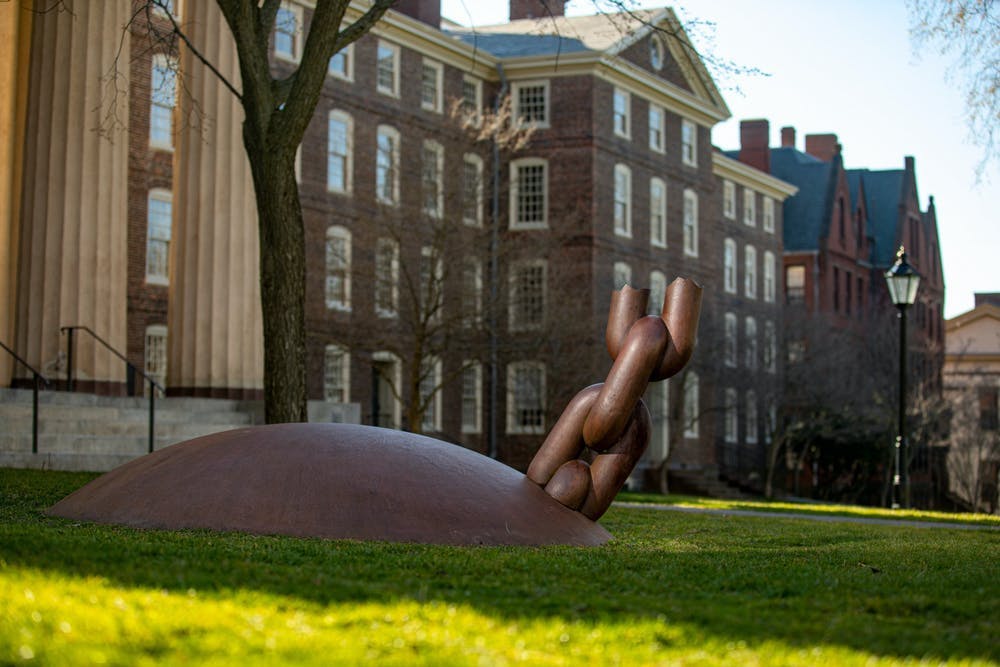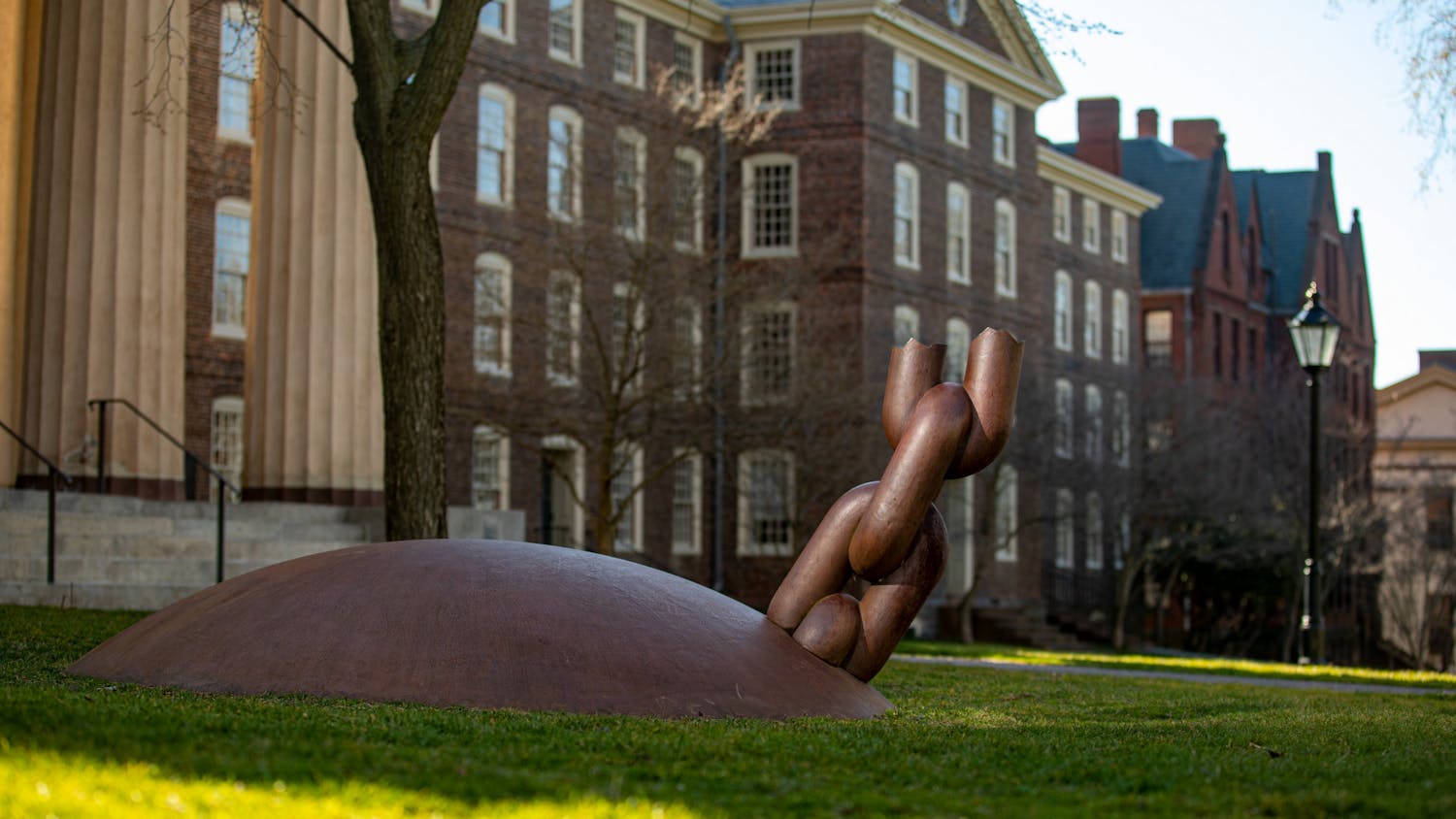Scholars and community members gathered at the Martinos Auditorium on Nov. 12 to launch the second edition of the University’s Slavery and Justice Report. The event featured a Q&A panel, a digital report showcase and reflections from students and faculty.
The original 2006 report, commissioned by former President Ruth J. Simmons, explored the University’s relationship to the trans-Atlantic slave trade. The second edition expands on the original report with a foreword from President Christina Paxson P’19, an interview with Simmons, 14 commissioned essays and a summary of the University’s response to the original report, The Herald previously reported.
Paxson kicked off the presentations with introductory remarks, describing the event as “an opportunity for us to consider the critical work that remains ahead.”
“Issuing the second edition now is a way to rededicate ourselves to the work that was started with the original report,” Paxson said in an interview with The Herald. “You don’t issue a report, have a set of recommendations, follow those recommendations and say, ‘Okay, we’re done.’ That’s not how it works. This is a long process.”
The event continued with a panel featuring three contributors to the second edition: Marcia Chatelain MA’03 PhD’08, professor of history and African American studies at Georgetown University; James T. Campbell, professor of history at Stanford University; and Seth Rockman, professor of history at Brown.
The panelists began by discussing the report’s impact and the University’s responsibility to address the legacy of slavery.
“We think of the stakeholders (of universities as) the people who keep the lights on, the donors, the parents and the students,” Chatelain said. “The Slavery and Justice report … turned that notion on its head.”
According to Chatelain, universities feared the outcome of examining their relationship to slavery.
“It’s the noise of ‘What if our history exposes the people … that have family ties to slavery? What if this alienates our donors?” she said.
But questioning the consequences of the report would have meant “undermining our best work as scholars,” she added.
“When the first report was issued, Brown stood by itself. Other institutions did not run to replicate that model, and there was still a lot of denial about slaveholding at universities,” Chatelain said in an interview with The Herald. “What the first report did, and what the second report emphasizes, is that universities can get engaged in this work and everyone can still be fine.”
Following the Q&A panel, Digital Scholarship Editor Allison Levy showcased the digital version of the updated Slavery and Justice Report.
The new report “is not just a digitization,” Levy explained in an interview with The Herald. It includes high-resolution photographs and transcriptions of the documents from the original report, updates the original report’s language and includes permanent reference links “to modernize the presentation of the report while also honoring what was there.”
“It’s a very dynamic experience,” Levy said. “That’s what we set out to do.”
The event included a student reflection from Kevin Boyce ’21 GS, an MPA candidate and a member of the University’s Task Force on Anti-Black Racism.
“What the school needs to do is primarily reflected in the Anti-Black Racism Task Force recommendations that were released this summer,” he said in an interview with The Herald. “I stand by all of those.”

Neil Mehta is the editor-in-chief and president of the Brown Daily Herald's 134th editorial board. They study public health and statistics at Brown. Outside the office, you can find Neil baking and playing Tetris.



